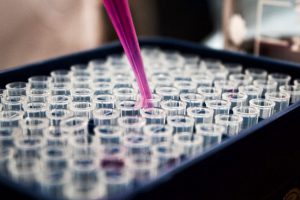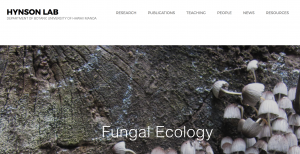The Biology and the Built Environment Center (BioBE) is currently seeking a post-doc to investigate fundamental questions surrounding the role of microorganisms (bacteria, viruses, fungi archaea, and protists) in the built environment and in relation to human health outcomes. Learn more and apply here. (https://careers.uoregon.edu/en-us/job/527294/post-doctoral-scholar-in-microbial-ecology)
Hi MoBE blog, I just wanted to share a piece that I recently wrote for a Special Issue on the journal Microbial Biotechnology. The Special issue presents a collection articles about “The contribution of microbial biotechnology to sustainable development goals”, and the title of my article is “Microbial communities as biosensors for monitoring urban …
The disease-causing organisms Burkholderia multivorans, B. cepacia, genomovars of the B. cepacia complex (BCC), as well as an unclassified species of Burkholderia, and its relatives Ralstonia pickettii and R. insidiosa account for 60% of the bacterial isolates obtained from the filtrated water system on board the International Space Station (ISS). Members of these genera can …
The Aerobiota of the Mauna Loa Observatory (MLO), Hawai’i project will fully characterize the fungal and bacterial communities captured over the last decade by air filters at the MLO on the island of Hawai’i, one of the most remote locations on earth. It might seem odd to call a weather station in a remote …
Of interest: Source: Alfred P. Sloan Foundation Award Fellowships to Study ISS Microbes | NASA Fellow: Melissa Dsouza, University of Auckland, New Zealand PI-Advisor: Kasthuri Venkateswaran, NASA Jet Propulsion Laboratory Investigating mechanisms for the acquisition and prevalence of antibiotic resistance genes in the ISS cultivable microbiome. Awarded by the NASA Space Biology Program. Fellow: Michael Lee, University of …
This is so awesome. The Sloan Program in Microbiology of the Built Environment is offering a pair of postdoc fellowships to work on the microbiology of the International Space Station. Summary of the call is below, the compete information packet can be downloaded here. And if that’s not cool enough, the next blog post is …
Just wanted to remind everyone that the deadline for postdoctoral fellowship applications through the Alfred P. Sloan Foundation funded Microbiology of the Built Environment (MoBE) program is September 1, 2016. The program provides support for postdoctoral researchers in laboratories currently engaged in research in the U.S. or Canada. Three awards of $120,000 each will be made in …
Floor dust is an important source of human exposure to microbes due to dust resuspension, especially from carpeted floors. Sources of microbes in floor dust are known to include outdoor air, tracked-in soil, growth on materials, and shedding from occupants or pets, but we wanted to know if growth may also contribute to these microbial …
(posted on behalf of Paula Olsiewski and the Sloan Foundation) The Alfred P. Sloan Foundation announces a funding opportunity in its Microbiology of the Built Environment (MoBE) program. The Foundation seeks to further the development of talented early stage Ph.D. scientists and engineers through the Microbiology of the Built Environment (MoBE) Postdoctoral Fellowship program. …
Hello Microbe.net readers, I am Fangqiong. I recently received the Microbiology of the Built Environment Postdoc Fellowship from the Alfred P. Sloan Foundation. I will be studying a kind of built environment microbiome, the microbiome in the urban water cycle, in Professor Eric Alm’s lab at MIT. I am very grateful to the Sloan Foundation …





